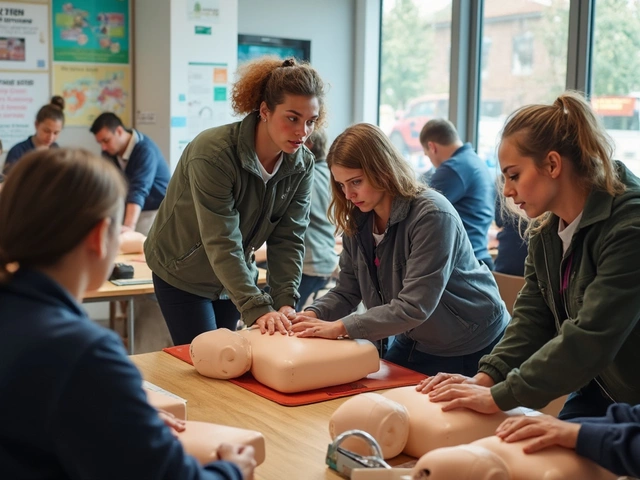OSHA Training: What You Need to Know
If you hear the term OSHA, you probably think of safety rules and inspections. But OSHA training is more than a checkbox – it’s a practical toolkit that helps you spot hazards, prevent accidents, and keep yourself and coworkers safe every day. Whether you’re a construction worker, a nurse, or an office admin, the right training can stop a costly injury before it happens.
Why OSHA Training Matters
First off, OSHA (Occupational Safety and Health Administration) sets the legal baseline for safe workplaces in the US. Companies that ignore these standards risk fines, lawsuits, and damaged reputation. For employees, the payoff is simple: fewer slips, burns, or exposure to harmful substances. Studies show that firms with regular OSHA courses see a 30% drop in recordable injuries. That’s not just a number – it means fewer lost days, lower insurance costs, and a healthier team.
Beyond compliance, OSHA training gives you marketable skills. Many employers list “OSHA certified” as a preferred qualification. Having that badge on your resume can open doors to higher‑paying roles, especially in construction, manufacturing, and healthcare. It also shows you take safety seriously, which can lead to quicker promotions or more responsibility on the job.
How to Get Certified
Getting started is easier than you think. Most courses are short – anywhere from a few hours to two days – and can be taken online or in a classroom. Look for “OSHA 10‑hour” if you’re new or need a refresher, and “OSHA 30‑hour” for deeper knowledge in areas like construction or general industry. Many training providers are approved by OSHA, meaning the certificate will be recognized by employers nationwide.
When you pick a provider, check two things: accreditation (they should be listed on the OSHA website) and real‑world content (look for hands‑on examples, not just theory). After you finish, you’ll get a printable certificate and a digital record. Save those, because you’ll need to show them during job interviews or when renewing a workplace safety plan.
Remember, OSHA training isn’t a one‑time thing. Regulations evolve, and new equipment brings fresh risks. Many companies require a refresher every few years. Set a reminder to retake the 10‑hour course or attend a short update whenever your industry releases a safety bulletin.
Bottom line: OSHA training protects people, saves money, and boosts your career. Grab a course today, add the certificate to your skill set, and start making your workplace safer for everyone.




